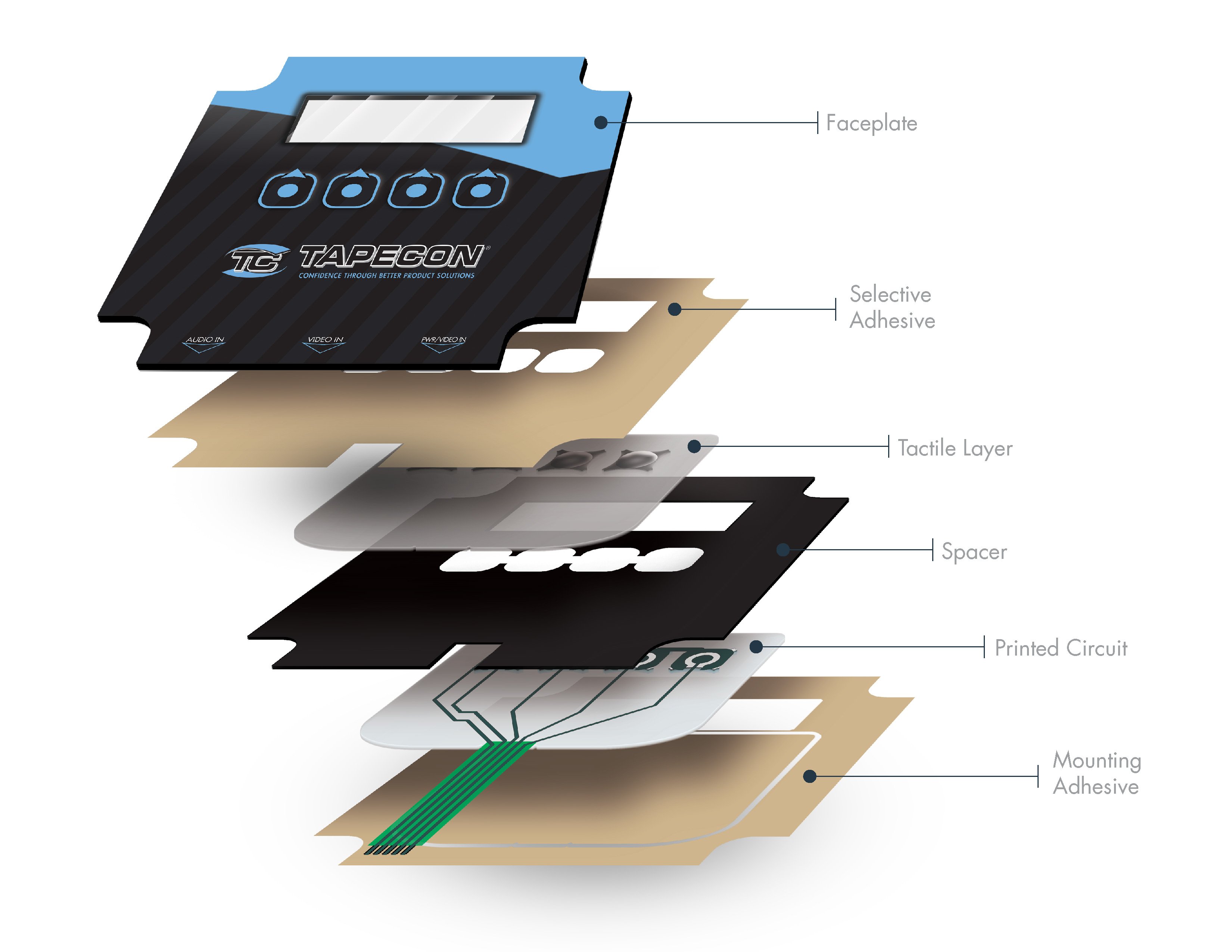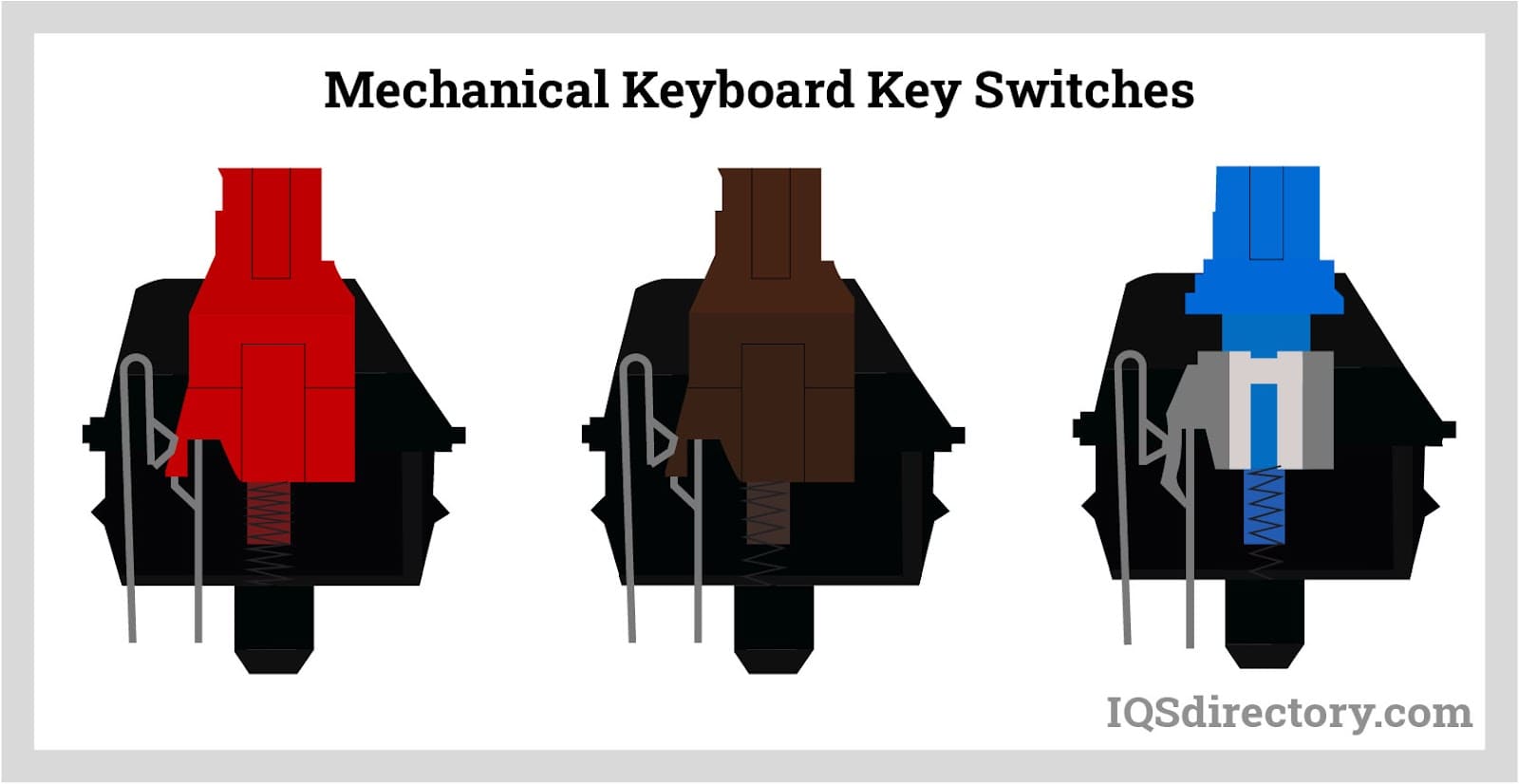Discovering the Uses of Membrane Layer Switch Over in Numerous Industries
Membrane layer buttons are important components across numerous sectors, consisting of consumer electronics and vehicle sectors. Their light-weight and durable nature enables for reliable use in portable gadgets. On top of that, these buttons supply resistance to environmental elements, improving their long life. As markets progress, the demand for customizable solutions expands. This increases important inquiries concerning the future applications and developments of membrane layer button technology. What brand-new opportunities lie ahead for this versatile element?
Membrane Switches Over in Consumer Electronic Devices
Membrane layer buttons play an important function in customer electronic devices, using an effective user interface for numerous devices. These buttons are designed to be thin and lightweight, making them ideal for modern-day gizmos where room goes to a costs. Their flexibility enables for integration right into diverse products, varying from house devices to handheld gadgets. The responsive feedback offered by membrane switches enhances individual communication, guaranteeing a smooth experience.Moreover, membrane switches are resistant to wetness and dirt, which is important for keeping functionality in day-to-day environments. They can be tailored with various graphics and shades, permitting manufacturers to line up with branding needs. Additionally, the cost-effectiveness of membrane layer switch modern technology makes it a favored choice for mass-produced electronic devices. As consumer need for streamlined, user-friendly tools remains to expand, the significance of membrane buttons in delivering trustworthy, effective user interfaces becomes increasingly noticeable, strengthening their location in the electronic devices sector.
Applications in the Automotive Market
In the auto sector, membrane switches are used to improve both functionality and aesthetic appeal within vehicles. These buttons are typically incorporated right into dashboards, control panels, and infotainment systems, providing a modern and sleek user interface for passengers and vehicle drivers. Their layout allows for seamless assimilation with different materials, which adds to the general aesthetic allure of the vehicle's interior.Furthermore, membrane switches are valued for their resilience and resistance to ecological factors such as temperature, dust, and wetness changes. This makes them suitable for applications in automotive settings, where dependability is necessary. Furthermore, they can be customized with different graphics and designs, allowing manufacturers to create one-of-a-kind branding aspects and individual experiences.As automotive innovation remains to progress, the demand for ingenious control options will likely drive further innovations in membrane switch applications, guaranteeing they remain a critical component in contemporary automobile design.
The Function of Membrane Switches Over in Health Care
Frequently ignored, the role of membrane switches in medical care is vital for guaranteeing the efficient operation of clinical tools and devices. These buttons offer as user interfaces for a selection of applications, including analysis equipments, person monitoring systems, and surgical instruments. Their layout enables very easy cleansing and sterilization, which is vital in maintaining hygiene in medical environments.Membrane buttons are likewise known for their sturdiness and resistance to wear, making them excellent for devices that endure regular usage. Their responsive feedback offers users with a trustworthy experience, boosting functionality for health care experts. Furthermore, membrane layer buttons can be tailored with different graphics and layouts, guaranteeing that they fulfill specific demands of various medical applications. Generally, the assimilation of membrane switches in health care technology not just boosts functionality however also adds to patient safety and security and operational efficiency within clinical facilities.
Aerospace Innovations With Membrane Layer Switch Over Innovation


Industrial Automation and Membrane Layer Change Solutions
Membrane button technology is progressively finding applications in industrial automation, where reliability and performance are critical. These switches work as indispensable elements in different automated systems, helping with customer interactions in environments that require robustness and toughness. Their design enables for a seamless assimilation with control panels and equipment, making certain ease of use for operators.In industrial settings, membrane layer switches can endure extreme problems, consisting of direct exposure to dirt, moisture, and severe temperatures. This strength makes them suitable for applications in production, logistics, and process control. In addition, their customizable features allow business to develop tailored remedies that fulfill specific functional needs.The responsive responses offered by membrane switches over improves user experience, minimizing the possibility of errors throughout procedure - membrane switch. As markets continue to evolve towards greater automation, the duty of membrane button innovation is anticipated to increase, driving performances and boosting workflow in complex industrial settings

Regularly Asked Concerns
What Materials Are Commonly Made Use Of in Membrane Layer Switch Over Building And Construction?
The products typically used in membrane button building and construction include polyester, polycarbonate, sticky layers, printed graphics, and conductive inks. These components assure adaptability, durability, and responsiveness, check out this site making them appropriate for different electronic applications in diverse markets.
Exactly How Do Membrane Switches Over Compare to Conventional Switches in Longevity?
Membrane layer changes normally use superior resilience read the full info here contrasted to typical switches, as they are less susceptible to mechanical wear and tear. Their sealed layout secures against dirt and moisture, improving long life in numerous applications.
Can Membrane Changes Be Customized for Certain Applications?
Membrane buttons can undoubtedly be personalized for particular applications. Their design adaptability permits for customized forms, functionalities, dimensions, and graphics, making them appropriate for diverse atmospheres and enhancing user communication across various electronic tools and equipment.
What Are the Ecological Factors To Consider for Membrane Layer Change Disposal?
The ecological considerations for membrane layer switch disposal consist of potential threats from products used, recycling chances, and adherence to laws. membrane switch. Appropriate disposal approaches are vital to lessen environmental effect and advertise sustainability within manufacturing procedures
Exactly How Do Membrane Changes Effect Customer Experience in Instruments?
Membrane switches substantially improve customer experience through responsive responses, resilience, and layout adaptability. Their seamless combination right into devices cultivates user-friendly communications, while their aesthetic appeal can raise product presentation, eventually adding to customer complete satisfaction and interaction. The tactile comments given by membrane changes improves customer communication, making certain a seamless experience.Moreover, membrane buttons are resistant to dampness and dust, which is important for preserving performance in day-to-day environments. In enhancement, membrane layer switches can be tailored with various graphics and designs, guaranteeing that they meet details demands of various medical applications. Membrane layer buttons are additionally immune to moisture and impurities, making sure sturdiness and longevity in different cockpit and cabin applications. Membrane layer switch innovation is increasingly discovering applications in commercial automation, where reliability and performance are paramount. Membrane layer company website switches over generally supply exceptional durability compared to traditional buttons, as they are less susceptible to mechanical wear and tear.